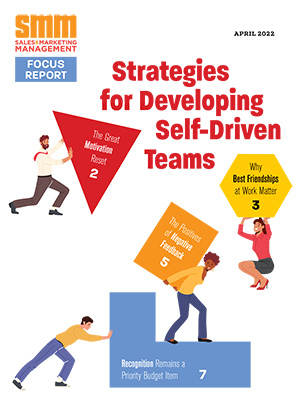
Warren Buffett’s annual letters to Berkshire Hathaway shareholders are pored over by millions of investors who hope to glean every ounce of wisdom the “Oracle of Omaha” has to offer. One philosophy Buffett has espoused for years is the idea of investing in companies that have an “economic moat” — a long-term competitive advantage that allows a company to earn oversized profits over time.
“We think in terms of that moat and the ability to keep its width and its impossibility of being crossed as the primary criterion of a great business,” Buffett wrote to shareholders in 2000. “We tell our managers we want the moat widened every year. That doesn’t necessarily mean the profit will be more this year than it was last year because it won’t be sometimes. However, if the moat is widened every year, the business will do very well. When we see a moat that’s tenuous in any way — it’s just too risky. We don’t know how to evaluate that. And, therefore, we leave it alone.”
That was 17 years ago. A businessman of Buffett’s ability may still be able to identify companies with economic moats, but success breeds imitators more than ever. Additionally, protecting a go-to-market strategy in this era of Internet marketing and self-educated buyers is more difficult than ever.
Growth by any means necessary
Eventually, every industry encounters slow growth and extended periods of peak usage. Innovative leaps that create new features and revive sales rarely occur often enough. During these times, one main source of growth can be winning business away from competitors.
Smart salespeople are always on the lookout for clients of competitors who are unhappy with their current vendor. Networking at tradeshows and industry events should be as much about gathering insights from non-customers as it is about meeting with current clients.
Your competitors’ customers are solid leads, says sales consultant Mark Hunter (TheSalesHunter.com) in his new book “High-Profit Prospecting.” “They’re already sold on what you sell. The only problem is they’re buying it from someone else.”
Hunter advises engaging with competitors’ customers frequently, so when their current vendor slips up, you have already established a relationship with them.
“The thrill of picking up a new customer this way is incredible. To me, this approach is by far the easiest way to generate prospects because you don’t have to educate them,” he says. “Too many salespeople lose way too much time prospecting because the only leads they’re going after are ones they have to educate.”
Be there when competitors aren’t
Hunter recalls a Dallas-based company he consulted for that suffered through a January slump year after year. What sales they did produce always came in at the end of the month. Upon further inspection, Hunter discovered that the company’s reps believed no one wanted to talk with them in December, so they did zero prospecting during December and paid for it in January.
Hunter had the sales force call on prospects throughout December, including the week between Christmas and New Year’s, when many people are out of the office. “Sure, the number of prospects the team was able to reach was lower due to the holidays, but the people with whom the sales team did speak were absolutely amazing,” he says. “Leads and prospects they did reach were in a more laid-back mood and willing to talk about their business. The end result was the prospects viewed the salespeople in a favorable light and were far more likely to agree to a meeting.”
The results that were produced by calling in the last two weeks of December can be duplicated during Thanksgiving week, Hunter says. Holding constructive conversations during these weeks — especially with your competitors’ customers — is the easiest way to differentiate your company.
Know your non-customers
Not only have markets become more competitive, in a number of industries, commoditization happens faster. “The pace of change in every industry makes it difficult to keep product development efforts ahead of the curve enough to fight off commoditization indefinitely,” says Steve Wiesner, founder and CEO of California-based Peloton, developers of a software as a service (SaaS) platform that delivers live, online role playing sessions for sales professionals.
The advent of the self-educated B2B buyer or buying teams means sales reps don’t get as much face time with prospects as they used to, thus, the role of educating buyers on product features has been greatly reduced. “It’s very rare now that a prospect is coming into an engagement with a potential supplier without having a really good understanding of the product, a really good understanding of the industry dynamic, knowing the competitive dynamic and the pricing dynamics,” Wiesner says. “What it means is sales reps need to be that much better prepared, because they’re not starting with a clean sheet of paper.”
Self-education cuts both ways, he emphasizes. Sales teams have more tools than ever to monitor competitors and competitors’ relationships with customers.
“There is absolutely no excuse today to go into a meeting and not know exactly who you are speaking with, exactly where they have worked before, exactly what their job responsibilities are, and who they have done business with. By empowering themselves with knowledge before engaging with prospects, reps are going to have a much better understanding of what the prospect’s real needs are. They’re able to show empathy around the problems the prospect is trying to address, and the prospect will be impressed by the fact the rep did his work. It’s a sales model that everybody needs to be practicing or it will be held against you. The prospect is going to wonder how seriously the rep is taking this.”
Use your prospects’ ideas
Writing in Harvard Business Review, authors and marketing consultants Vijay Govindarajan, Javed Matin and VK Shashikumar posit that businesses looking to grow in a slow-growth economy or a lagging industry must learn how to listen to the voice of non-customers. Ask:
- What opportunities are we missing?
- How can we listen to our future customer?
- Can we involve them in creating the product? How?
- Are their aspirations and hopes integrated into our design process?
It’s hard to think of a sales tactic that is more powerful than listening to pain points from a competitor’s client and addressing that client’s wish list by tweaking your own product or service to accommodate them. “Showing that you understand their needs and that you’re willing to make the investment to translate that knowledge into a tangible product will build incredible loyalty,” says Wiesner.
Reps have to believe in what they’re selling
Without question, sales is a confidence game, but it has to be more than confidence in one’s own ability. “Truly great salespeople are the ones who spend time helping prospects genuinely understand how a specific product or solution addresses their biggest pains. They radiate trust and confidence, and only make a recommendation when they honestly feel their offerings can help prospects achieve their goals,” says Kendra Lee (KLAGroup.com), a sales consultant and author.
“The only way salespeople can sell like that is to possess a true belief in the product or service they’re selling. Otherwise, how can you say with certainty and confidence that a solution will truly make a prospect’s business more effective?”
A company’s marketing messages should reflect that same sort of confidence. In fact, side-by-side comparisons with competitors’ products or services are an effective means of reaching today’s self-educated buyers while simultaneously enhancing your company’s organic search performance, says Adam Broetje, CEO of Odd Dog Media, a Seattle digital marketing company.
“In order to take business away from someone else, you have to be confident that, feature for feature, you are better than the competition. By creating content that directly targets your product versus your competitor’s, you’re in control of that customer. You need to do it honestly, but it allows you to control what some of that messaging looks like,” Broetje says.
Make friends with the competition
Every business that stays in business for any length of time will take some customers away from competitors and lose some to them as well. The constant is that competitors will always be there. Turning competition into the enemy is the wrong approach, states Brian Scudamore, founder and CEO of O2E Brands, the parent company of 1-800-GOT-JUNK?, WOW 1 DAY PAINTING and You Move Me.
Writing for Forbes online, Scudamore says he goes as far as to invite competitors to tour his corporate HQ or sit in on a morning huddle. “Some people might think that sort of transparency is crazy, but I’ve learned that when you help each other out, everybody wins,” he says. “No two companies are exactly alike, so trust that you can benefit from one another’s resources without stepping on anyone’s toes.”
Competition makes you stronger. If you are in a new industry or business category, competition can actually help build awareness. Harvard Business Review calls that sort of rapport “coopetition.”
“Luckily, it’s not secrets that define success or failure, but execution — the thousands of things that the best companies do right, day after day,” Scudamore says. “If you have confidence in your company’s execution, and know you can stand out and be different, then it’s healthy to lay it all on the table.”



